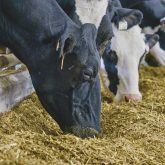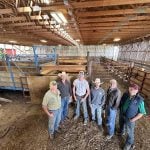Canada’s new official international status as a “negligible risk” country for bovine spongiform encephalopathy now has its first recognition from a beef-importing nation.
Singapore has approved the Canadian Food Inspection Agency’s certificate for exports of all Canadian beef, including beef offal, with no restrictions on the age of the cattle from which the beef was harvested.
Singapore’s decision, effective Friday (Aug. 20), makes it the first to remove BSE-related trade restrictions on beef that were held over from Canada’s previous “controlled risk” status.
Singapore had until now approved all Canadian boneless beef and bone-in beef from animals under 30 months of age (UTMs).
Read Also

New opportunities for Canadian goods in Mexico
Agriculture minister’s trip to Mexico sees promotion of Canadian goods like beef and canola, with potential for more partnerships in the future
That said, Singapore hasn’t bought any Canadian beef since 2019, in which it took 1.79 tonnes, worth $31,000. Its biggest year for BSE-era beef imports from Canada was in 2014, when it took 53.77 tonnes, worth $586,000.
“While Singapore is not currently a large market for Canadian beef, (the Canadian Cattlemen’s Association) is pleased with the market access progress as diverse market access leads to trade resiliency and the highest overall value for Canadian farmers and ranchers,” CCA president Bob Lowe said in a release Tuesday announcing Singapore’s decision.
“We are encouraged by Singapore’s change and hope others will follow soon.”
Delegates to the World Organization for Animal Health (OIE) formally recognized Canada’s “negligible risk” status in late May, putting it on the same footing as beef-producing and -exporting nations such as the U.S., Australia, Argentina, Brazil, India, New Zealand, Mexico and Ireland.
The discovery of Canada’s first case of BSE in domestic cattle in May 2003 led many countries to halt and/or restrict imports of Canadian beef — decisions which are estimated to have led to losses of up to $5.5 billion for Canada’s beef cattle sector in the years 2003 to 2006 alone.
Canada achieved “controlled risk” status for BSE in 2007. To get to negligible-risk status, a country must show its last case of “classical” BSE was born more than 11 years ago and effective control measures and surveillance systems are in place.
The last of Canada’s 19 domestic BSE cases, discovered in 2015, was in a cow born in 2009.
A progressive, fatal disease of the nervous system in cattle, crudely called “mad cow disease,” BSE is in the family of transmissible spongiform encephalopathies (TSEs) such as scrapie in sheep, chronic wasting disease in deer and elk, and Creutzfeldt-Jakob disease in people.
No treatment or vaccine against BSE is yet available, and no method yet exists to confirm the BSE agent’s presence in live animals.
From a public health perspective, the deaths of about 230 people worldwide from a variant form of Creutzfeldt-Jakob disease (vCJD) are believed to be connected to consumption of contaminated beef from BSE-infected cattle.
According to Health Canada, no cases of vCJD have ever been linked to eating Canadian beef and BSE in Canada poses an “extremely low” risk to human health.
Most of Canada’s major beef export markets already approved all Canadian beef, based on their previous recognition of controlled-risk status.
However, the CCA said Tuesday, “several” key trading partners including China, Taiwan and South Korea haven’t yet done so.
Most of the remaining import bans are on Canada’s bone-in beef, offal and/or beef from animals over 30 months of age (OTMs), which are believed to be the highest-risk age group for development of BSE.
China, Russia and Peru, for examples, still accept Canadian bone-in beef only from UTMs, and boneless beef from OTMs. South Korea, Ukraine, Saudi Arabia and Egypt accept Canadian beef but only from UTMs. Indonesia accepts Canadian boneless beef from both UTMs and OTMs. — Glacier FarmMedia Network












